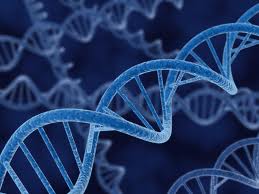Computing with DNA and other wild ideas
IARPA says bring 'em on
The intelligence community's research shop wants to see if DNA, lightwaves or other phenomena can be harnessed into computers that would rip through big data sets dramatically faster than today’s machines or those on the horizon.
Scientists in the U.S. and abroad have until April 5 to chime in about their work and its potential relevance to intelligence problems. IARPA released the “Novel Technologies for High Performance Computing” request for information on March 8.
If the ideas look promising, they could lead to a new research program and another step in IARPA's effort to push scientists and the industry to do more than squeeze more circuits onto chips.
IARPA has been pushing the computing envelope for a while. It's already funding quantum computing research, including work by Nobel laureate Dave Wineland at the National Institute of Standards and Technology in Colorado, and it's exploring superconducting computing under a program called C3 for Cryogenic Computing Complexity. Next, it wants to see if entirely new concepts can help with problems like big data. The community is accumulating huge data sets, and it's going to need more and more computing power to find nuggets of critical information in those troves.
One problem for IARPA is that research on exotic concepts is scattered among numerous agencies, corporations, and universities in the U.S. and abroad.
“We don’t know the state of the art – or the state of the science actually – in these other techniques,” said IARPA Director Peter Highnam. “We’re asking both about the technologies and we’re asking about the types of applications that technology might do well at.”
IARPA plans to evaluate the responses and then possibly issue a broad agency announcement kicking off a competition for funds.
Highnam isn’t sure when that might be given the continuing resolution the government is operating under, and sequestration.
“It won’t be tomorrow,” he said. “I don’t want to try to speculate.”
IARPA’s brainiacs spend a lot of time reading scientific papers, and one of the motivations for the novel technologies initiative was a 1994 paper by Leonard Adleman. He’s the A in the RSA encryption algorithm that protects transactions over the Internet. In the paper, Adleman described using strands of DNA to perform an algorithmic computation.
Highnam and his colleagues decided IARPA should learn more about DNA and other wild concepts for processing information.
Just as in the C3 superconducting program, IARPA wants to look beyond what Highnam calls the “CMOS juggernaut.” That’s a reference to the complementary metal-oxide semiconductors inside today’s graphics processing units. GPUs are great at quickly rendering three-dimensional graphics in video games, but entirely new kinds of processors might be better at plowing into big data or other intelligence problems.
Why hasn’t old-fashioned free-market enterprise brought new approaches to the market?
Highnam thinks computer designers have been doing the equivalent of teaching to the test. Winning new business means climbing up the industry’s official “TOP500” performance rankings, and to do that a computer must score high on the industry’s official computational yardstick, known as the LINPACK Benchmark.
If getting ahead comes “via the LINPACK benchmark, then you’re going to build systems that do really well on the LINPACK benchmark,” Highnam said.
The rub is that entirely different kinds of computers might open the door to new applications. The LINPACK results are “relevant and really good -- if you’re interested in primarily physics, or 3-D physics, simulations and analysis, which is where that type of math came from,” Highnam said.



